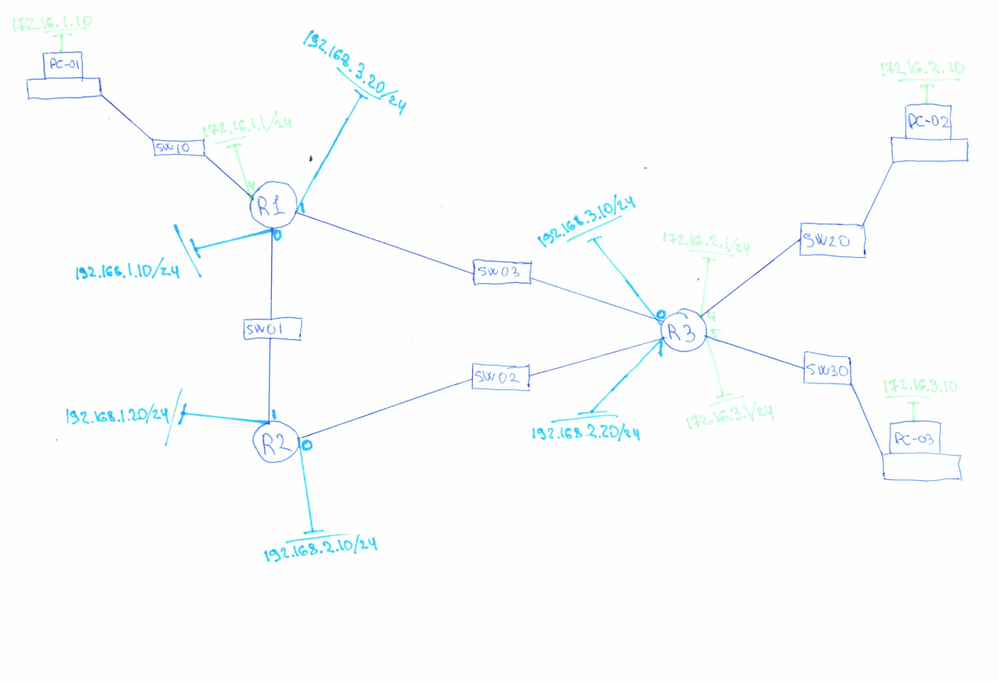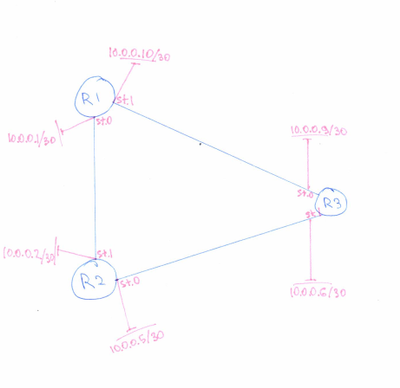Sorry for my absence. Recently, I have a lot of responsibilities and very little time 😞
Ok, I created 3 routers in a virtual environment (R1, R2, R3) and 3 computers (PC-01, PC-02, PC-03) and I hope I can correctly put the question.
For interfaces, I have assigned an IP address from the 192.168/16 network, this is my mpls zone for building tunnels.
For interfaces in the local network and PC's, I chose the green network 172.16/16.

Next, I brought up the tunnel interfaces. Let them be pink 🙂 At this stage, there are no problems, like OSPF 🙂
At this stage, there are no problems, like OSPF 🙂
R1 pings R2 and R3. Computers ping your gateway, great!
The meaning of the task is actually not very complicated, I just don’t know how to make the juniper do what I want.
My real-life users are PC-02.
Task: PC-01 refers to PC-02 on the route from R1 to R3. PC-01 turning to PC-03 follows the route R1->R2->R3.
Well, my first step: in order for PC-01 to get access to PC-02 by OSPF through R3. To do this, I simply add the tunnel interfaces of R1 and R3 to the null area, and also announce in the null area interfaces looking towards PC-01 and PC-02. Great, the first step is completed, I have access from PC-01 to PC-02 on the route from R1 to R3!
Great, in the second step I add the tunnel interface st.1 of R2 to the null area, so that when R2 sees the network, PC-03 tells about R1 too. Thus, R1 will know that the network PC-03 is accessible through R2.
I did this and the following steps based on the articles that I managed to find in solving a similar problem. All of them come down to creating a virtual router and a separate routing table.
Step three for me was the creation of a PC-03 network, and a virtual R4. In the virtual R4, I created a new area number 3, where I added a tunnel interface looking towards R2 and the PC-03 network.
In step 3 and further, I cannot get the routing tables at all, or at least export the routes inside R4 to the main table. R2 just loses the network over the tunnel interface with a R3 and I just can’t show the R2 that there is a R3. I even added lo0.3 interface in R3 and lo0.4 interface in R4, so I thought they could share their routes "between" themselves. That's what I have in the end:

It will be very cool if you can help, because I think about the task almost every day and I don’t know how to do it right. And then there are routine tasks that do not allow to concentrate: (
Thank you for trying to help me.